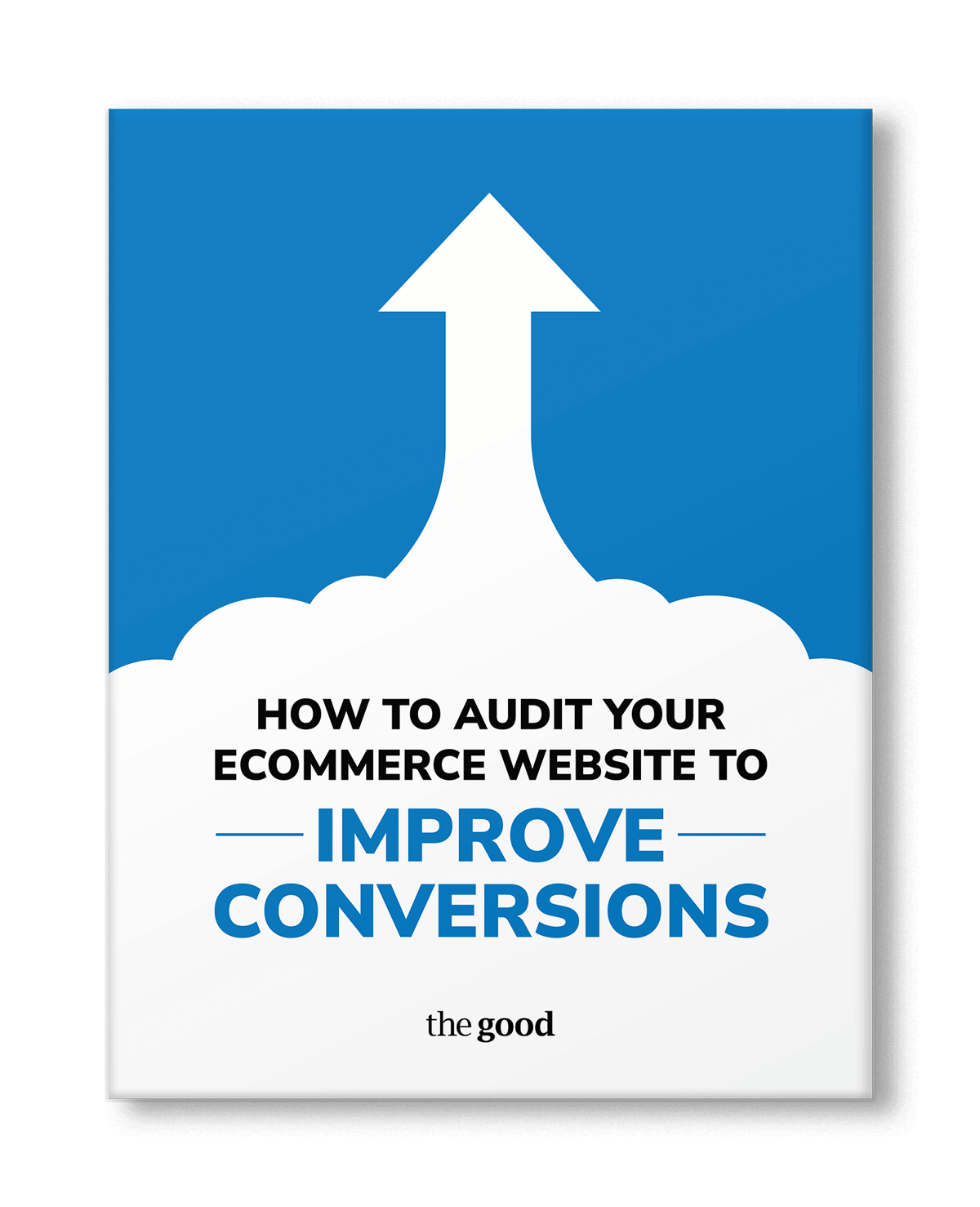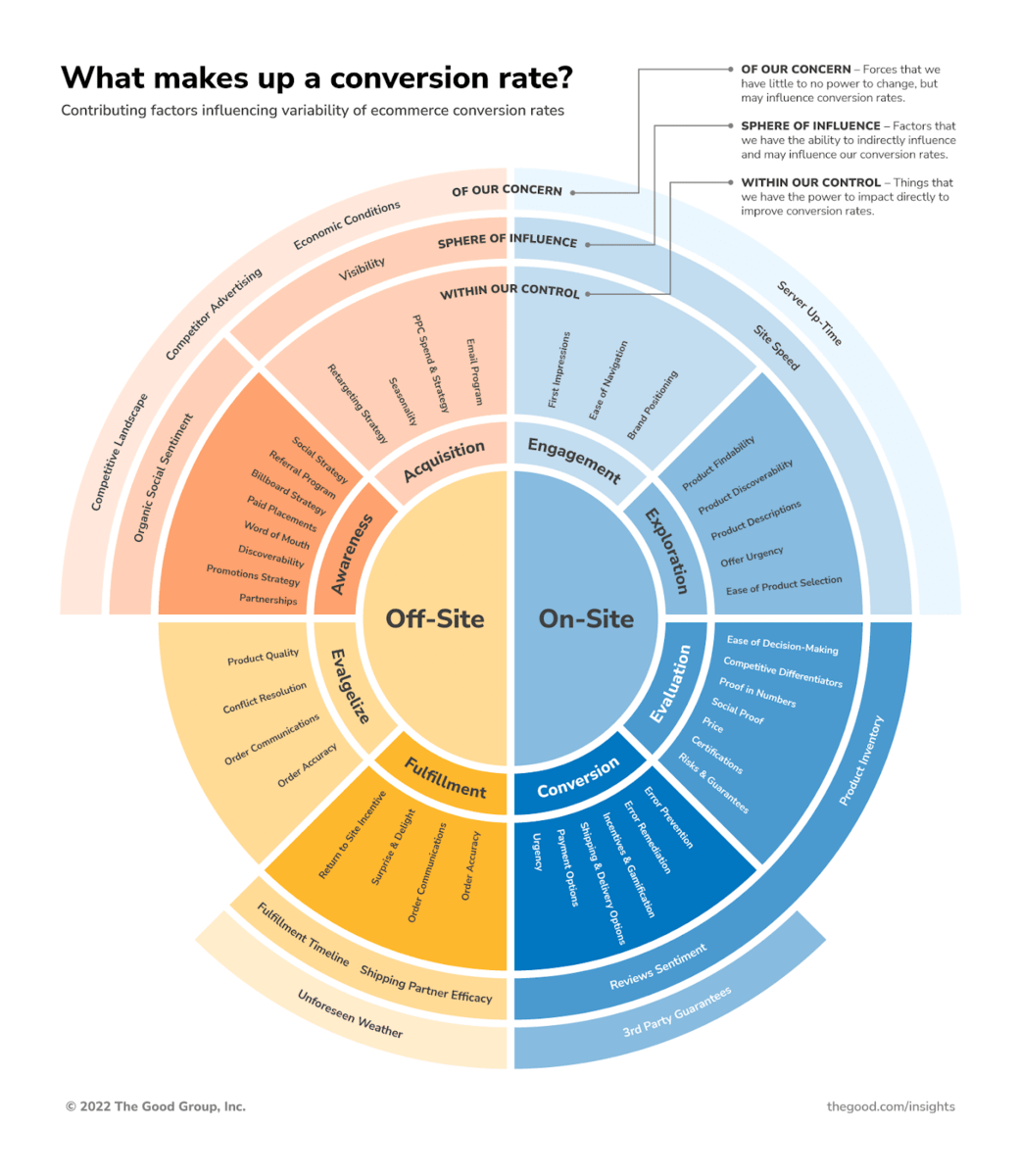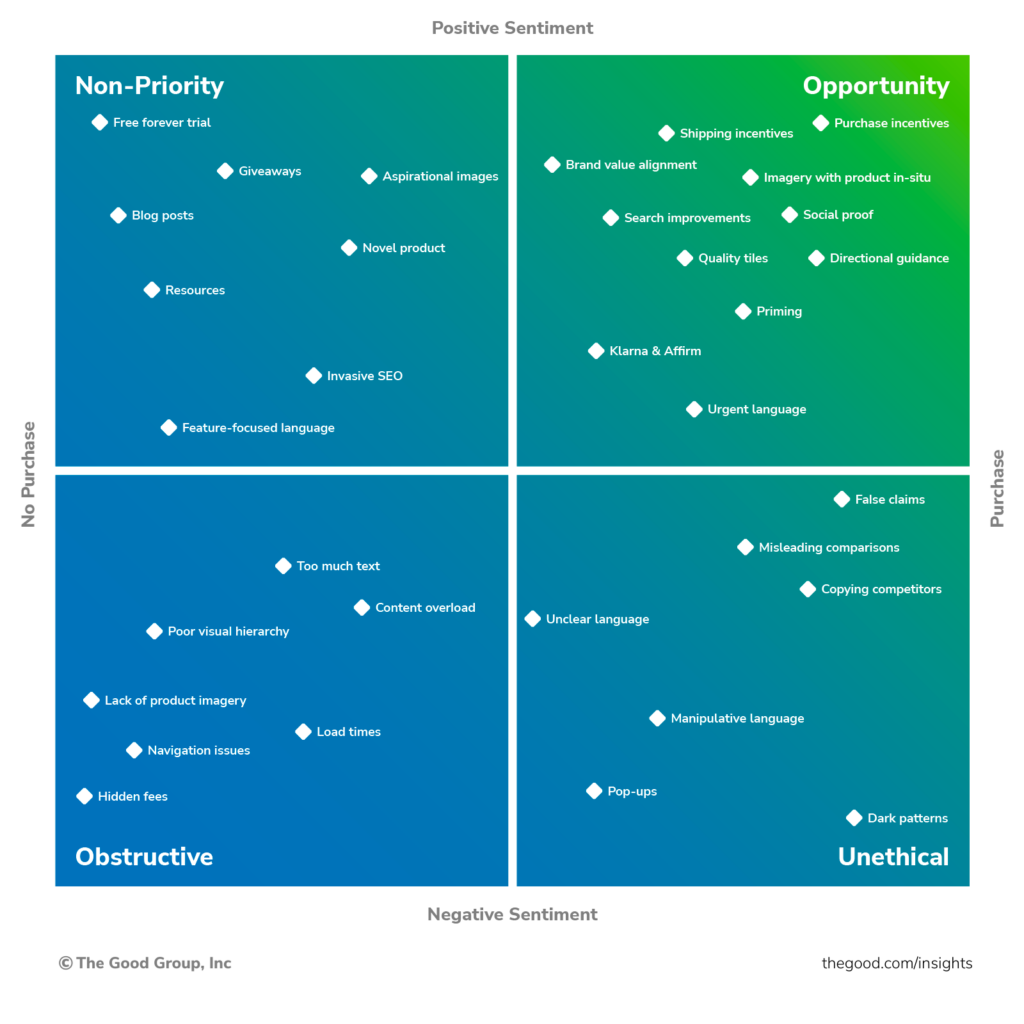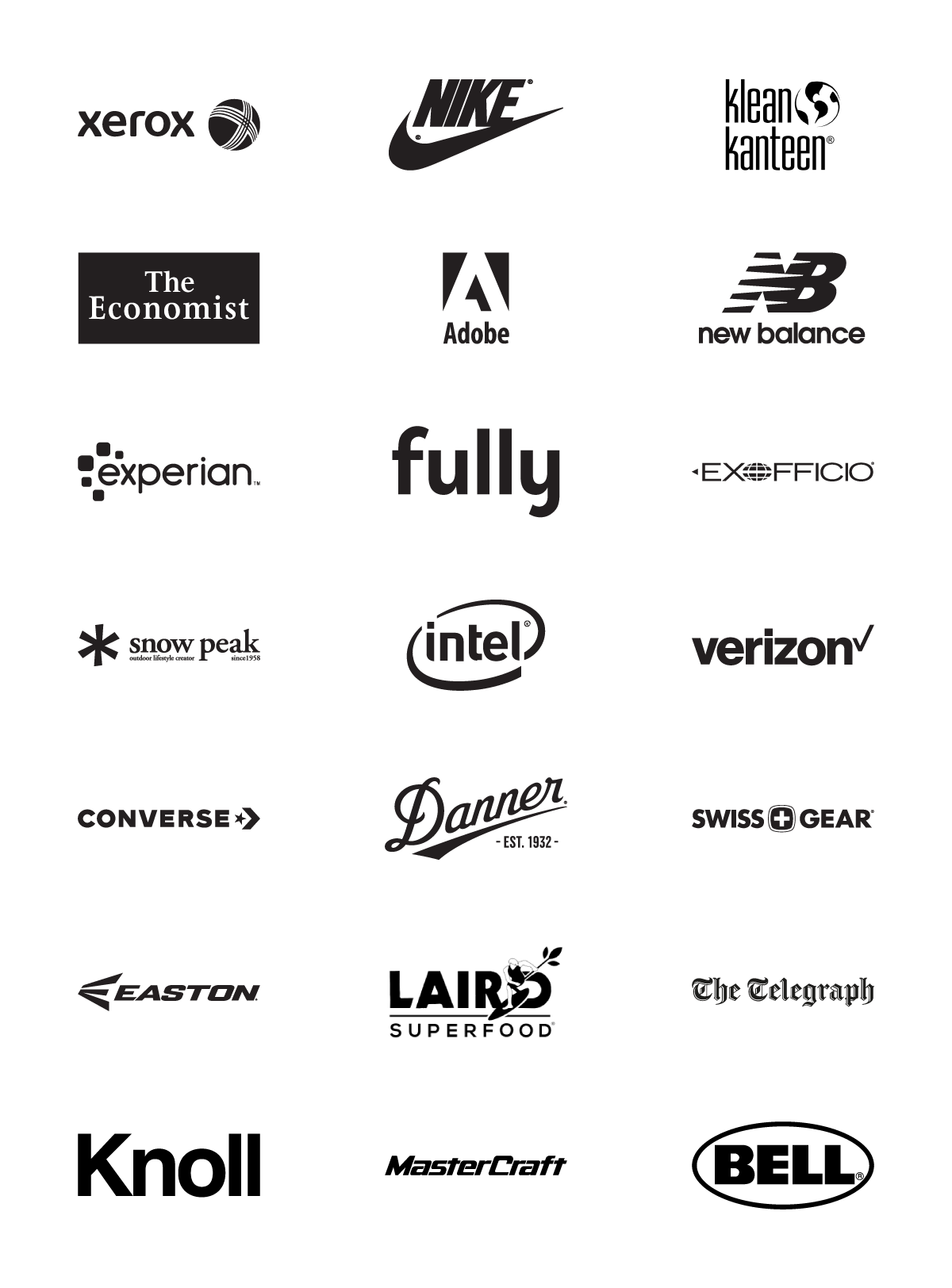
What Is A Good Conversion Rate?
There is no magic number when it comes to a good conversion rate. Instead, brands should focus on continuous improvement and optimization.
It’s the million-dollar question.
The one on every ecommerce manager’s lips, even if they don’t voice it out loud (but, from our experience, they usually do voice it out loud).
After all, what is a good conversion rate? Is there a magic number you should be aiming for or a percentage that, when you reach it, means you’ve hit the big time, and you can sit back and relax?
You probably can already guess the answer to this.
There is no magical number – in fact, there are so many variables when it comes to commerce conversion rates that it’s near-on impossible to pin a percentage on different industries and verticals.
We’ll break this down a bit more throughout this piece, but keep this nugget of advice in mind while you’re reading: a good conversion rate is one that’s always improving.
It’s probably not the answer you want to hear, but let us explain.
Conversion rate basics: what does conversion rate actually mean?
Conversion rate defines the percentage of people who take a specific, desired action out of everyone who has the chance to take that specific, desired action.
The term conversion rate can be applied to many different touchpoints in every industry. For example, a content site might call an email marketing newsletter subscription or a PDF opt-in a conversion. A software company might call a user signing up for a new trial a conversion.
In ecommerce, brands typically call a product purchase a conversion, but the term can also be used to communicate how many people click through on a Facebook ad to visit a landing page.
The sheer difference in descriptions and actions can make it tricky to decipher what’s a “good” or a “high” conversion rate and what’s a “bad” or a “low” one.
The content site might generate a 40% conversion rate. The SaaS company might have a 14% conversion rate on its free trial. A direct-to-consumer furniture manufacturer might “only” have a 3% conversion rate on couch purchases. But, depending on how much traffic each company attracts and what their average customer lifetime value is, the furniture store with the 3% conversion rate might secure more revenue and profit than the content site with a 40% conversion rate.
In this article, we’re going to focus on product purchases as conversions. Now we’ve got that sorted, we can start talking about potential benchmarks on a level playing field.
How to measure conversion rate
Here’s the formula for working out your conversion rate:
Conversions (or sales) / visitors * 100 = conversion rate
For example, if 400 people made a purchase in a month and you had 15,000 visitors to your site, your conversion rate would be 2.66% since 400 / 15000 * 100 = 2.66.
Keep in mind that conversion rate and ROI for your efforts go hand in hand. To get a feel for what could happen in your business with an increase, plug your own metrics into our ROI and conversion rate calculator here.
What is a good conversion rate?
We’ve already started to scratch the surface here.
You want to know whether you’re doing well, right?
Here’s the thing: most of the time ecommerce managers are looking to determine whether their conversion rate is performing well in general and they want to know whether they’re doing better or worse than their competitors.
But pitting yourself against the competition doesn’t give you an accurate depiction of where you’re at.
Sure, you can have a look at studies. But this doesn’t factor in what kind of ecommerce sites are getting these rates.
There’s going to be a huge difference between a brand that sells luxury, handmade furniture and a brand that sells iPhone cases. One brand might get 10,000 visitors a month with a 2% conversion rate, while another might be seeing over one million visitors a month with a 2% conversion rate – which one is doing better?
The challenges with measuring conversion rates
It’s easy to compare yourself with other, similar sites. But as we’ve just shown above in one single example, a 2% conversion rate can mean different things to different businesses.
The quality and quantity of traffic you’re bringing to your site have a huge impact on conversion rate. Two sites can have exactly the same layout, products, and prices, but have wildly different conversion rates. One might convert at 0.1% while the other might convert at 3% simply due to the quality of traffic coming through the site.
The intent behind the SEO keywords shoppers use plays a major part in conversion. One site might be getting one million hits a month from people searching generic phrases like “sofa bed” or “jeans” which doesn’t provide much information. Are these people looking for a sofa bed or jeans? Are they looking for reviews? Are they even ready to buy, or are they just carrying out initial research?
On the flip side, another site might get 10,000 visitors a month from focused shoppers who are actively in buy mode. They’re using keywords in search engines like “buy a sofa bed” or “Levi jeans size 12”. Customers in buy mode are far easier to convert, but there are practices you can put in place to strengthen the chances of an on-the-fence shopper making a purchase. We’ll talk more about that later.
This is why your biggest competitor should be you. A good conversion rate is one that is increasing monthly, weekly, and daily.
How To Audit Your Ecommerce Website To Improve Conversions

Ecommerce conversion rate benchmarks
It’s easy to find benchmark data. But, I am going to tell you what my colleague Natalie always emphasizes. Benchmarks are bullshit.
Of course, industry benchmarks will give you an idea of where you sit in the market, but they don’t tell you anything else about your business. We’ve worked with multiple brands in the same vertical that have completely different conversion rates because they have different audiences, different missions, and different goals, despite selling products that fall into the same category.
This is why we discourage ecommerce brands from comparing themselves to the industry averages and instead compare themselves to… themselves.
The reasoning is that these averages are almost always faulty. Brands often don’t share their true conversion rates, they’re not all measuring it in the same way, or they’re using bad data to get their final numbers. There’s no knowing whether it’s true or not, and comparing yourself to a “maybe” or a “what if” simply doesn’t do anything.
Finally, we find that brands tend to do one of two things when they look at benchmarks:
- Feel great because their conversion rate is higher than average, but then stop optimizing it because they’ve “done enough”
- Feel awful because their conversion rate is below the industry average, and end up with an unhealthy focus on “beating the competition” rather than serving their own customers
4 steps to improving your conversion rate
Improving your conversion rate should always be front of mind regardless of where you measure up against benchmarks or what your competitors are doing. Constantly improving means more sales, more revenue, better lead generation and more qualified leads, and more growth opportunities.
1. Consider the variables that impact conversion rate
So many brands jump on the idea of a total website redesign hoping it will give their conversion rate a much-needed boost, but that’s often putting the cart before the horse. If the redesign isn’t based on data and consistent experiments you’ve been running, chances are it’s not going to be the silver bullet you were hoping for.
Instead, consider what variables impact conversion rate.

Once you understand the elements that can affect conversion rate, you can start to dig into what needs to happen to reduce the risk of someone disappearing off into the sunset before they buy.
For example, is the quality of traffic coming to your site good enough? If the answer is no, how can you improve that? Target different keywords? Run PPC ads somewhere else?
Or, if your target audience seems to be dropping out of the sales cycle right at checkout, what could be the problem? Maybe they aren’t given their preferred payment choice, maybe extra fees were added at the last minute, or maybe they simply got distracted. Either way, what can you do about it?
2. Understand “good” and “bad” conversion tactics
There are endless ways you can tweak your website to increase conversions. You can switch up your copy, add clearer CTAs, use better-quality photos, or create a one-click checkout process. The possibilities are endless.
But before you dig in, it’s crucial to understand what conversion tactics are “good” and “bad” (it’s easy enough to Google what tactics you can try), but it’s also important that you figure out which ones will both increase conversions and drive positive customer sentiment.

3. Focus on measurable outcomes
We often see ecommerce managers focusing on disjointed goals and spreading their efforts too thin without realizing that they are losing focus on what actually matters: a better customer experience that drives revenue.
The best teams (ones that drive proven growth) know how to focus their energy on what moves the needle.
Sometimes this means marginal improvements aren’t big, fancy gestures, but over time they add up. Making marginal improvements every day will eventually lead to sustained and consistent growth while giving you the chance to fully understand what your customers want and need from you.
4. Take a scientific approach
We mentioned before how a total redesign is a bit like throwing spaghetti at the wall and seeing what sticks (and, in many cases, nothing sticks at all and you’re back to square one after spending tons of cash).
Instead, think of your landing page conversion rate in scientific terms and make incremental improvements every day that have focus. Running A/B tests and experiments will give you the insights you need to tweak your copy, product pages, Google ads, and everything in between until you’ve got a higher conversion rate.
Consider running experiments or tests on:
- Product descriptions
- Product photos
- Ad copy, headlines, and visuals
- Checkout
- Customer journey
We can take inspiration from Amazon here. The mammoth marketplace takes the lion’s share of ecommerce sales every year, and much of this success can be pinned on experimentation. In 2011, founder Jeff Bezos ran 546 experiments per year. By 2013, his teams were running 1,976 per year.
Increase your ecommerce conversion rate with The Good
We’re big advocates of constantly striving to improve your conversion rate regardless of where you’re currently at in the market. Competing with yourself is a surefire way to get the results you want because you’re in total control of what you’re doing.
At The Good, our conversion rate optimization (CRO) process involves carrying out marginal tweaks and improvements on a daily basis which creates a snowball effect over time (and a better overall user experience). We use experiments and tests to identify your unique areas of improvement and put a strategic, data-driven plan in place that consistently increases your conversion rate every single day.
Want to learn more about getting better conversion rates? Read our new book, Opting In To Optimization.
If you’re ready to start improving your conversion rate, explore our Conversion Growth Program™.


About the Author
Jon MacDonald
Jon MacDonald is founder and President of The Good, a digital experience optimization firm that has achieved results for some of the largest companies including Adobe, Nike, Xerox, Verizon, Intel and more. Jon regularly contributes to publications like Entrepreneur and Inc.